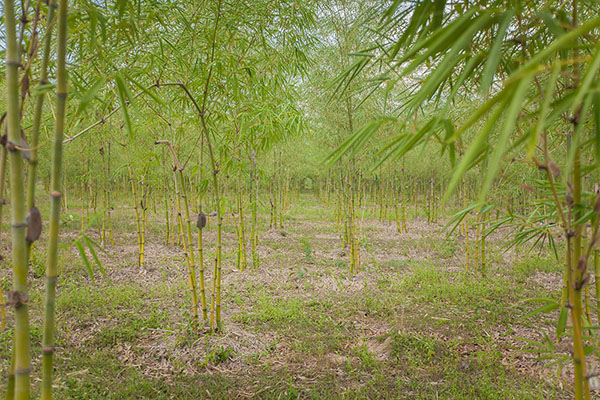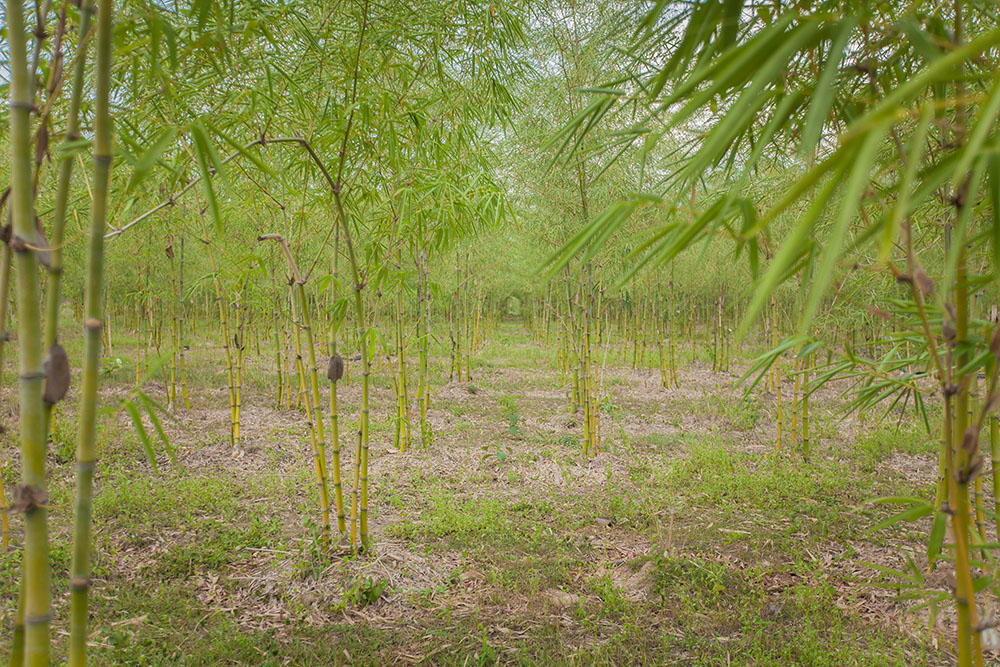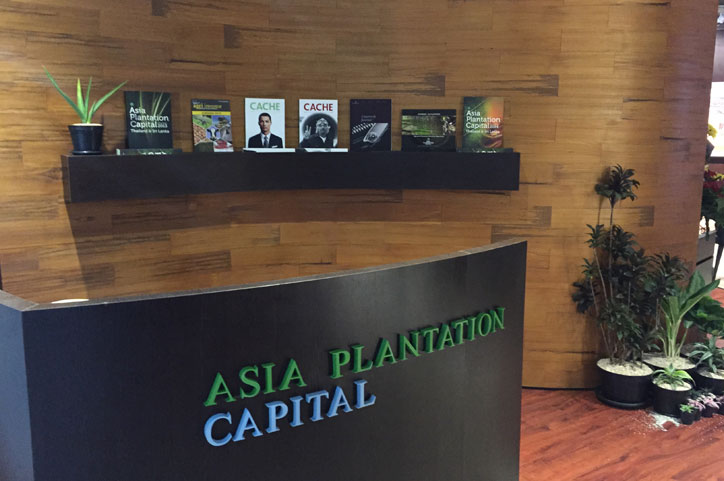Environmental Impact of Planting Bamboo Along a River Bank
Bamboo forests have many environmental benefits because they function as carbon sinks, produce oxygen, control soil erosion, provide organic matter, regulate water levels in watersheds, conserve biodiversity, beautify the landscape, and essentially contribute to the purification and regulation of the environment.
Bamboo Absorbs Huge Amounts of CO2
Bamboo captures huge amounts of carbon dioxide which they generate and convert into oxygen. Bamboo does not release the trapped CO2 as it stays captures inside the plant, even after the harvested timber is used in value added products for construction, flooring, panels, etc. it still functions as a carbon sink.
Furthermore, bamboo is a sustainable and renewable resource because it continuously spreads vegetatively. This allows the formation of forests much faster compared to most other tree species. Unlike other types of commercial forestry crops where trees must be clear-cut and replanted, in bamboo plantations only mature stems are harvested while younger stems are left untouched to mature and develop.
Regulating Water Quantity and Quality
Africa Plantation Captial Bamboo regulates the quantity and quality of water, which are essential characteristics when managing watersheds. Bamboo forests also serve for sediment control. They form a sort of wall that prevent the loss of flow in rivers.
In addition, the forest cover of their canopy prevents the evaporation of streams. Therefore, the environmental impact of bamboo is indisputable if it comes to effective watershed protection.
Soil Erosion Control
Bamboo plants with their interwoven system of roots and rhizomes contribute to the recovery and conservation of soils present on riverbanks. Beneath the ground lays an extensive network of rhizomes that ties together and prevents soil erosion on hillsides or river banks. Planting bamboo to control soil erosion is recommended in areas susceptible to landslides or slopes in the process of slowly loosing its soil.

The woven root system acts as a cohesive for colloidal particles, making the plant a very important species as a soil protector near rivers. In the rainy season bamboo absorbs large amounts of water, it stores the water both in its rhizomes as in the stems and soil. This means that bamboo has a high water storage capacity. Later on, due to the effects of concentration, the water is returned to the soil, rivers and streams during the dry season.
The leaves of the bamboo plants prevent the impact of raindrops, favoring the dispersion of the raindrops into smaller particles. This contributes that ground water is distributed smoothly throughout the forested area. If bamboo does not exist on hillsides or slopes, heavy rains will probably cause erosion problems sooner or later.
Improve Soil Quality/Fertility
Africa Plantation Captial Bamboo also adds a great amount of organic matter to the soil. Its large mass of leaves, twigs and dry stalks contribute to nutrient cycling, thus conserving soil fertility in both its physical and chemical aspects.
Bamboo for Wastewater Treatment
As sewage treatment, bamboos are presented as an alternative water pollution solution through the Root Zone Method (RZM). There are different methods to treat water pollution and each is applied depending on the nature and extent of contamination.
The water treatment processes are divided into three groups: primary, secondary and tertiary. The primary methods is purely physical, the secondary is biological and the tertiary can be of both types.
The Root Zone Method for water treatment is of the secondary type because it is based on the biochemical activity of microorganisms that remove dissolved and suspended materials, or by converting them into less polluting compounds. Most of these processes are aerobic and therefore require the presence of atmospheric oxygen which will be used by microbial populations in the oxidation process.
This method of wastewater treatment is based on the action of microorganisms living in the root zone or rhizosphere of different plants. Thus, the wastewater is biochemically oxidized by bacteria present in this area. Plants provide an adequate supply of dissolved oxygen for this process by transferring atmospheric oxygen via the leaves, stems and roots.
Bamboo a host of Fauna and Flora
The temperature combined with a gloom atmosphere that occurs inside a mature forest of bamboo, greatly favors the establishment of different animal species and under story plants that prefer to grow in these conditions.
Bamboo Beautifies the Landscape
Bamboo that grows near rivers and streams form spectacular gallery forests that enrich the landscape. Bamboo forests due to the different stages of development of their individual stems, generate a wide variety of greens that enrich the landscape in contrast to other crops or plants nearby.
Bamboo species that are suitable for planting a long a river bank
Oxytenanthera abyssinica (solid bamboo): A clump forming, solid stemmed bamboo. It is a drought resistant bamboo. The culms of are solid in the lower internodes, and hollow from the upper half to the top of the culm. The dense clump consists of 20–100 (exceptionally up to 200) stems (culms) between 10–15m tall and up to 10cm in diameter with internodes of 32cm. It grows in areas with a minimum annual rainfall of between 350 and 800 mm. occurring from sea-level up to 2000m altitude, but mainly at 300–1500m.
Dendrocalamus membranaceus: A giant clumper reaching a height of 18-25m, diameter of 10-14cm, internode of 30-50cm and culm wall thickness of 1-3cm. It is planted for both shoot and timber production. It’s one of the most drought resistant tropical bamboos with a minimum rainfall requirement of 700mm per year. Adaptable to high temperature of 21.7ºC and average maximum temperature 33.3ºC., high humidity as well as drought and degraded soil. It’s poles have good resistance to insect, disease and decay. Poles are good for construction, making paper, fiber, plywood, shoots, handicrafts, biomass, and charcoal production. Grown up to 2000m altitude.
Phyllostachys pubescens edulis (moso): Its Latin name edulis, refer to its edible shoots. This bamboo can reach heights of up to 20m. Moso groove can be used to cultivate bamboo mushroom. In textiles, its physical properties are more superior to that of cotton, wool, rayon, or polyester. Culm wall is 10mm thick; leaf 4-11cm long, 0.5-1.2cm wide. Cultivated and processed bamboo for both poles and shoots. Moso poles are used in construction, weaving, textile, pulp, shoots and biomass. Shoots are delicious both fresh and processed. Grown from 2000 to 3200m altitude.
Dendrocalamus strictus: A giant clumper reaching a height of 17m, diameter of 6-10cm, internode of 25-40cm, culm wall thickness of 2cm. The culms tend to be semi solid at the base. The branches grow low, with numerous branches. Sheath is gold brown setae on the dorsal surface with triangular blades. Leaves are small, 10-22cm long by 1-2.5cm wide. Mean annual temp. range of 20-30ºC. Mature clumps can withstand periods of extreme temperatures from -4ºC to 45ºC. Annual rainfall is between 1000-3000 mm. It’s a draught resistant bamboo. Its timber is hard, which makes it good material for construction. It’s one of the top bamboo species used for paper production, shoots, bamboo fiber, plywood and biomass. Grown up to 2000m altitude.
Dendrocalamus asper: A giant clumper reaching a height of 18-30m, diameter of 10-22cm, internode of 35-65cm and culm wall thickness of 1-3cm. Also called rough bamboo. It’s one of the best bamboo species for plantation, both for shoot and timber production. Culm show aerial roots from the nodes. Average annual rainfall of about 2400mm. An average biomass production of 123 tons per hectare per year. Grown up to 2300m altitude.
Fargesia yunnanensis, Fargesia fungosa, Fargesia gaolinensis: Mid clumper bamboo reaching the height of between 8-15m tall, internode of 30-45 cm long, with 6-10 mm thick walls. Branches emerge high in the stem at 1.5-3 m, with 6 to 12 branches and unobvious dominant branches. Shoots are gray green, sometimes black green. Sheath are deciduous, hay-colored. Sheath have blade lancelet, curving outwards. 3 to 5 leaves emerge at the final branch. Leaves are 8-17 cm by 0.7-1.5 cm wide. Good for Ornamental, Shoots, Poles. Grown from 2000 to 4000m altitude.
Yushania alpina: A mid clumper bamboo reaching the height of between 6-15m tall, internode of 25-40 cm long, with 2-4 mm thick walls. the only native species, which grows naturally between altitudes of 2290 m to 3360m in the Mt Kenya, Aberdares, Mt Elgon, Mau Forest and the Cherangani Forest water catchment areas. Good for fencing, construction, props in the flower industry, edible shoots, toothpicks and skewers, incense sticks, baskets and handicrafts.
Bambusa Vulgaris: Bamboo, botanically known as Bambusa vulgaris, can be described as an open, clump-type bamboo species having lemon yellow culms, with green stripes and dark green leaves. The plant can grow up to a height of 12 meters, with an 8 cm thickness. Good for Ornamental, biomass, charcoal. Grown from 2000 to 4000m altitude.
Dendrocalamus brandisi: A giant clumper reaching a height of 15-30m, diameter of 10-20cm, internode of 30-55cm and a culm wall of 2-4cm. Culms have aerial white circular roots at the base. The branches are low. Shows early deciduous, yellow brown with brown bristles on the dorsal surface and the sheath blades curving outwards. Leaves are small 10-18cm long by 1-2cm wide. It’s good bamboo for timber production. Used for construction, paper, bamboo fiber plywood, shoots, biomass and handicraft. Bamboo clumps are giant and upright, of great ornamental value. Grown up to 2200m altitude.
Dendrocalamus hamiltoni: A giant clumper reaching a height of 18-30m, diameter of 10-22cm, internode of 35-65cm and culm wall thickness of 1-3cm. Also called rough bamboo. It’s one of the best bamboo species for plantation, both for shoot and timber production. Culm show aerial roots from the nodes. Average annual rainfall of about 2400mm. An average biomass production of 123 tons per hectare per year. Grown up to 2300m altitude.
Bambusa tulda: A moderate dense mini-giant clumper reaching a height of 8-20m, diameter of 5-10cm, internode of 30-60cm and culm wall thickness of 7-1.3cm. Culms green, glabrous when young, without spines. Branches at the upper nodes, very bushy look, horizontal growth; nodes not swollen, lower ones fibrous rooted. Best for timber, medicine, cottage industry and large landscaping. Grown up to 1500m altitude.




